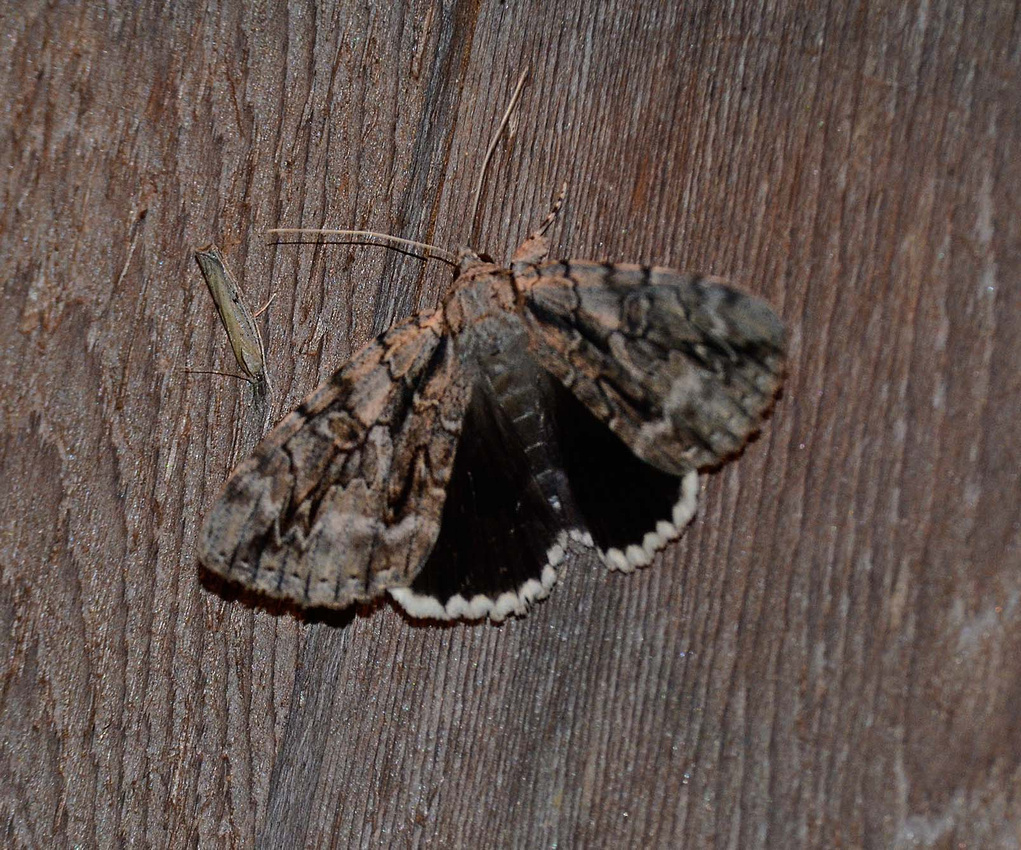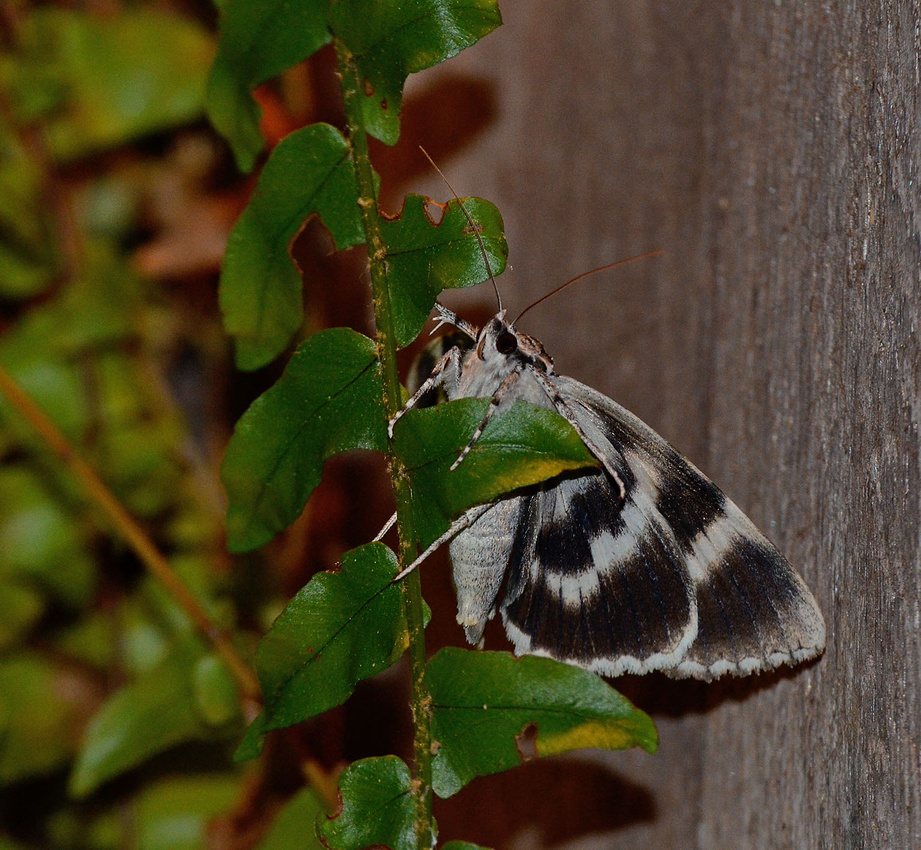Underwing season
 Retecta underwing, home
Retecta underwing, home
Given that the anti-Lyme medication I'm on has left me more vulnerable to horrendous sunburning than is typical—when my hair had pigment, I was a red-head—I'm doing much of my walking and natural history documentation between dusk and dawn. That puts me in contact with lots of moths, particularly the Underwings, a group characterized by sharply contrasting, in color and pattern, forewings and hind wings. The forewings are typically designed to blend into whatever background the moth finds itself on, which, when it's resting, is often tree bark. But if the insect is detected by a potential predator, it flashes its back wings, whose altogether different pattern and color seems to be, according to biologists, geared towards startling the intruder and giving the Underwing time to make a quick break for it. This one, which showed up at the kitchen lights, is a member of the Catocala retecta clan. The Yellow-Gray Underwing is exceedingly common in our area and is definitely one to look for on the shingles, as well as on the nearby Boston Fern that offers support and refuge to any number of nighttime visitors.
 Retecta underwing, home
Retecta underwing, home